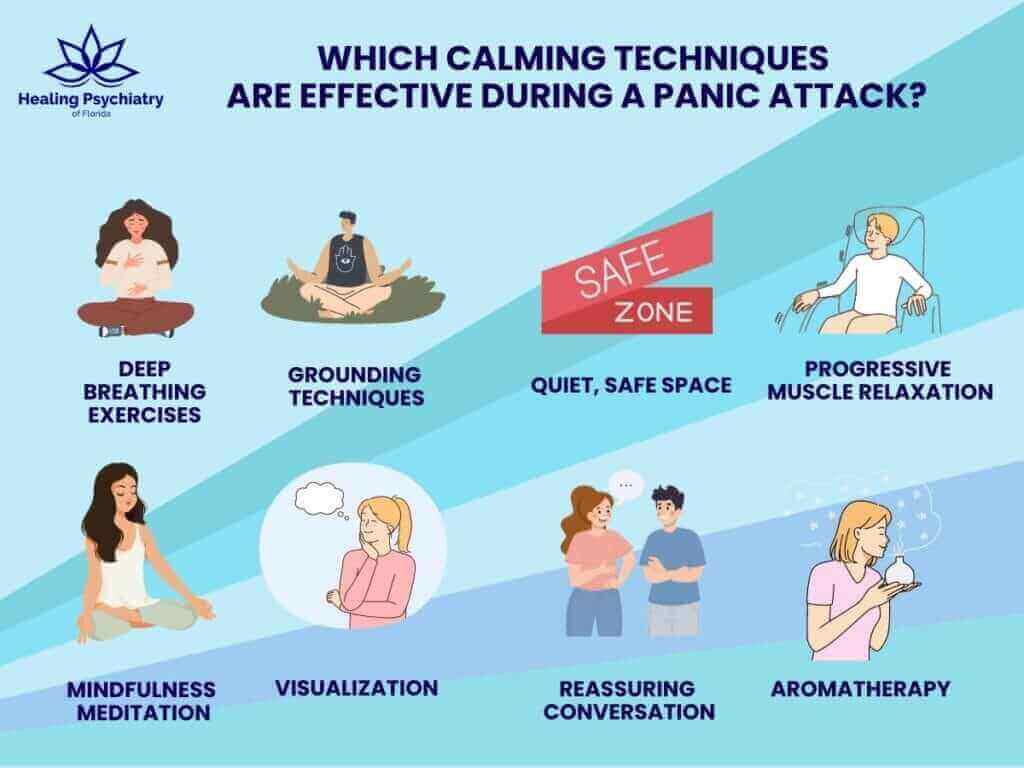Clinically Reviewed By Dr Dubey Shiva
Learn how to help someone recognize the symptoms of a panic attack including a fast heartbeat, intense fear, and chest pain. To help, stay calm, move the person to a quiet place, speak gently, and encourage slow breathing. Use calming techniques like deep breathing, grounding exercises, and mindfulness. Encourage seeking professional help for frequent panic attacks. By understanding these steps, you can support someone during these distressing moments.
What Are Panic Attacks and What Do They Look Like?
Panic attacks are sudden onsets that are often accompanied by the following:
- extreme fear
- rapid heart rate
- severe anxiety
- chest pain
These mental health episodes start without apparent cause, leaving the person unexpectedly overwhelmed and distressed. Understanding these signs is the first step in providing support.
How Can You Recognize the Signs of a Panic Attack?
Recognizing a panic attack early involves noticing symptoms such as:
- Rapid heartbeat
- Difficulty breathing
- Intense fear or anxiety
- Feeling dizzy or lightheaded
- Trembling
- Chest pain
- Sweating
- Nausea or upset stomach
Identifying these symptoms helps manage the situation quickly.
What Is the Best Way to Provide Immediate Support During a Panic Attack?
The best way to offer support to someone during a panic attack is to stay calm and help by making sure the individual is in a quiet place. Speak gently, acknowledging their feelings without overwhelming them. In these situations, encouraging them to breathe slowly is helpful. Controlled breathing begins bring back a sense of calm.

Which Calming Techniques Are Effective During a Panic Attack?
Effective calming techniques during a panic attack include:
- Deep Breathing Exercises: Encourage the person to focus on their breath and take slow, deep breaths.
- Grounding Techniques: Teach them to engage with their surroundings to distract from overwhelming feelings. For example, help them to focus on the surface their feet is in contact with.
- Quiet, Safe Space: Find a quiet place where the person can feel secure, away from too much sensory input, which can make anxiety worse.
- Progressive Muscle Relaxation: Guide the person by tensing and then relaxing different muscle groups.
- Mindfulness Meditation: Encourage the person to practice mindfulness, which involves staying present and aware of their environment and sensations without judgment.
- Visualization: Help them visualize a calm or happy place, focusing on the details of that environment.
- Reassuring Conversation: Keep talking to the person in a calm and soothing voice.
- Aromatherapy: If accessible, use soothing scents like lavender or chamomile, which help reduce anxiety and encourage calm through sensory engagement.
These techniques are useful for managing the symptoms of most panic attacks, helping the person regain control over their feelings and physical reactions during these difficult situations.
Why Should You Encourage Someone to Seek Long-term Help After Experiencing Panic Attacks?
Encouraging someone to seek professional help is important; serious panic attacks can indicate a panic disorder if they happen frequently.
If someone you know frequently experiences panic attacks, consider some professional help by reaching out to Healing Psychiatry of Florida. Our team is equipped to provide support and guidance on managing anxiety and stress through professional help.
What Should You Avoid Doing When Someone Is Having a Panic Attack?
It is important to avoid making the person’s anxiety worse by minimizing their feelings or offering cliché advice; instead, empathy and patience are key.
Conclusion
Helping someone during a panic attack involves quick thinking, empathy, and immediate support. By recognizing the symptoms and using simple techniques, you can assist a person in regaining calm and control over their feelings and symptoms.

